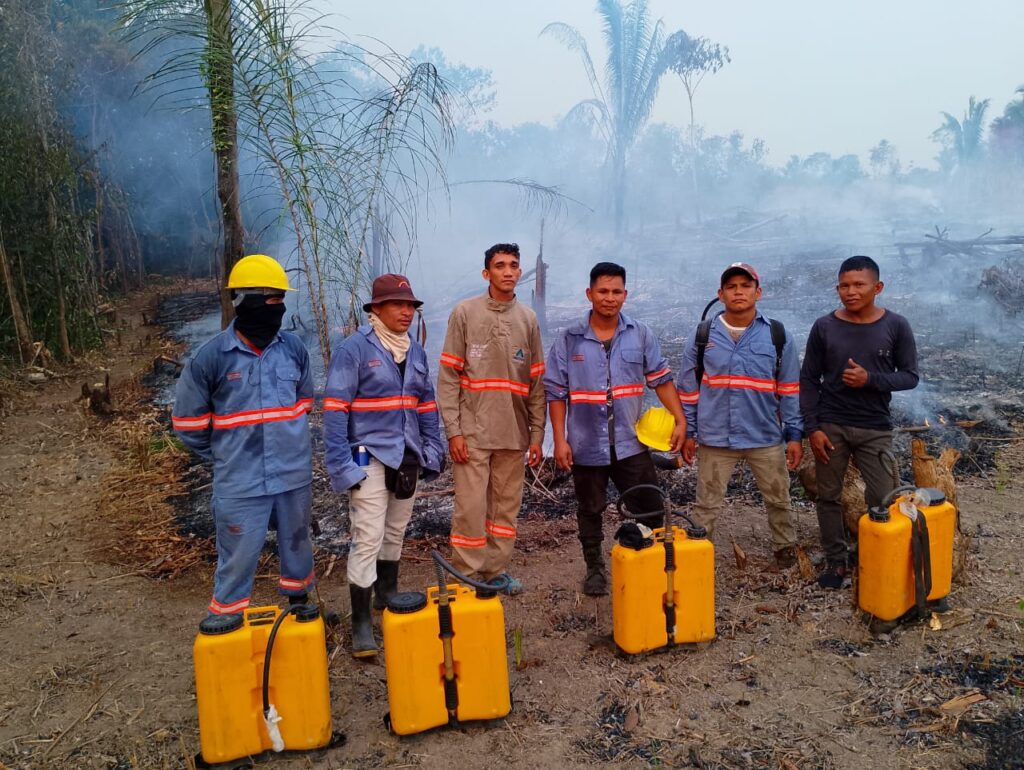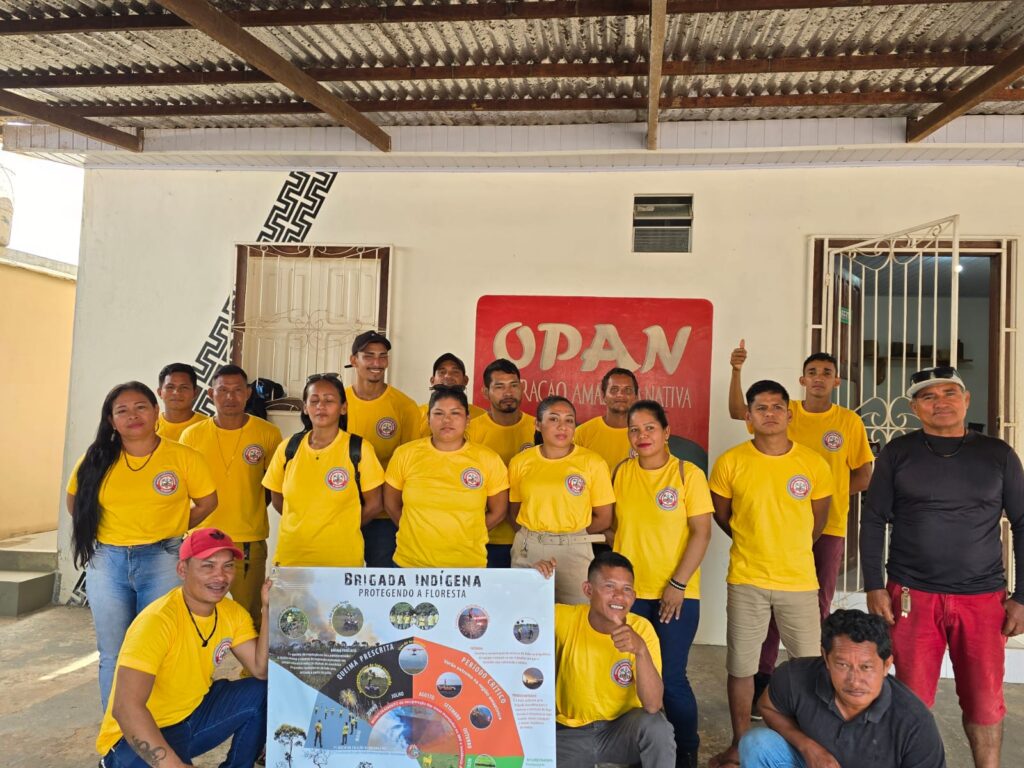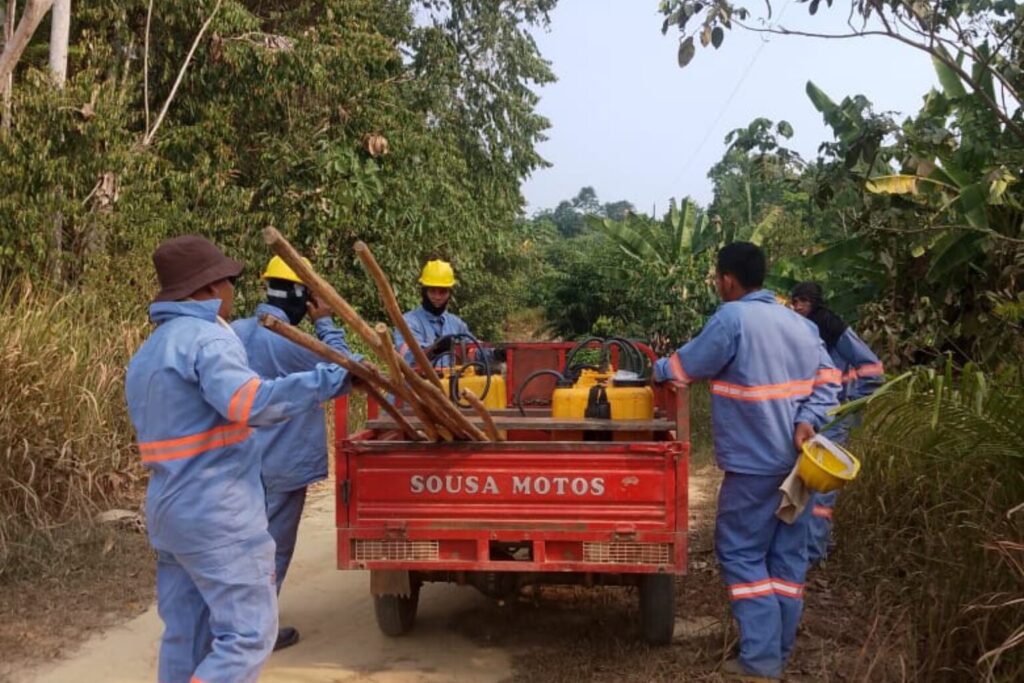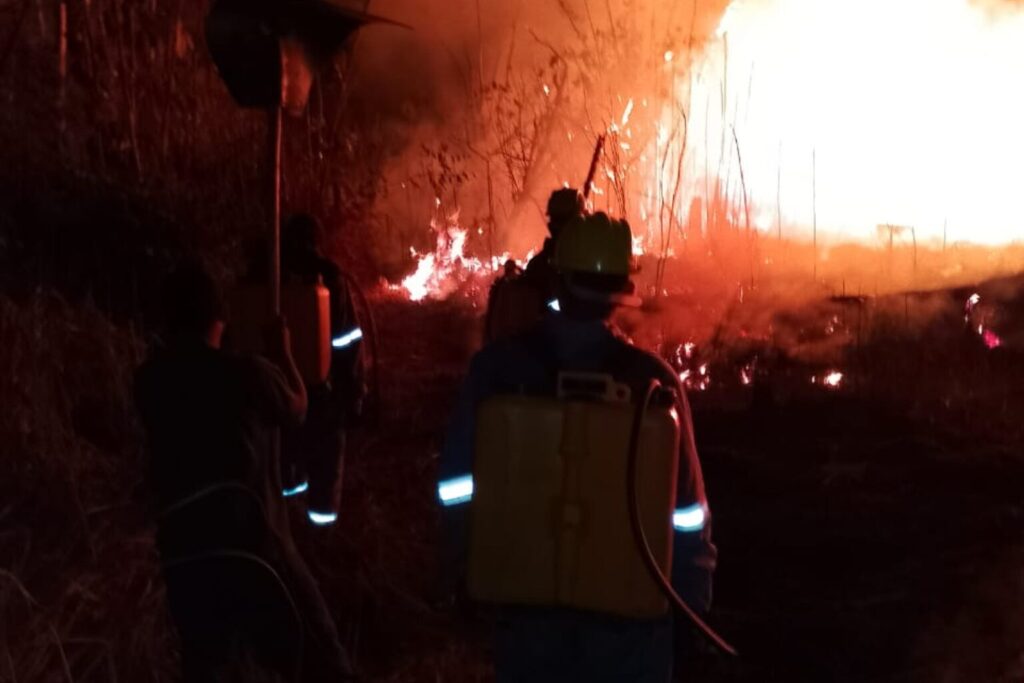Indigenous Brigade acts to protect the territory from fires
Comprised of 23 indigenous people, the Voluntary Brigade was formalized in July 2024 and has already acted in 22 occurrences in the Caititu Indigenous Land, in the south of Amazonas.
AI generated audio
By Talita Oliveira | OPAN
“We need to protect our territory. If we don’t take care of what is ours, in a while we’ll be like in the city, because in the city we have nothing more to breathe, it’s just smoke”, says Raimundinha Rodrigues de Souza, head of the newly formed Indigenous Fire Brigade of the Caititu Indigenous Land. This is because Lábrea, a city located in the south of the Amazon and close to the Caititu indigenous land, home to the Apurinã people, is in third place in the ranking of the municipalities with the most outbreaks of fire in 2024. According to a survey by the inpe, 2,064 alerts were issued in the municipality until August of this year.
With the intensification of deforestation and illegal fires, the impacts were felt on the Caititu indigenous land, where the Apurinã people develop their traditional swiddens and agroforestry systems (SAFs). Through the Raízes do Purus project, carried out by Operação Amazônia Nativa (OPAN) and sponsored by Petrobras and the federal government, the Apurinã people implemented 37 SAF units, distributed in 21 villages, totaling an area of 41.6 hectares, which are in full production of fruits, beans, tubers and other foods.

Important for the food security and income generation of the Apurinã, the SAFs suffered significant losses in previous years due to illegal fires that occurred around the territory and ended up entering the indigenous land during the dry season.
“I lost my SAF because of fire and in other villages we suffered losses as well. That’s when we, together with OPAN and the Raízes do Purus project, intended to organize a course to form the indigenous people as brigadiers”, reports Tata Apurinã, treasurer of the Association of Indigenous Producers of the Caititu Indigenous Land (APITC) and One of the pioneers in the implementation of agroforestry in the Apurinã territory.
The creation of the 1st Indigenous Brigade of TI Caititu
The process of creating the Caititu Indigenous Land Brigade began in 2022. At the time, Francisco Padilha, indigenous to the Apurinã people who already had training in the firefighting area, offered basic training to a small group. “There were seven people and they have already done a good job. Now there are 23 brigadistas who are working within our land”, says Tata Apurinã. In the same year, the Apurinã also acquired the necessary equipment for the work, such as mufflers, costal pump, radio communicators and personal protective equipment.
In 2023, in an articulation led by APITC and OPAN, the Brazilian Institute for the Environment and Renewable Natural Resources (IBAMA) was asked to apply, through the National Center for the Prevention and Combat of Forest Fires (PREVFOGO), the application of an advanced technical course for improvement and formalization of the Indigenous Fire Brigade of the TI Caititu. The course was finally applied in 2024, forming the 23 indigenous people who are already voluntarily working in the fight against fires.

Tata Apurinã says that, even with the high occurrence of illegal fires in the surroundings of the Caititu Indigenous Land, there were no losses in the plantations thanks to the work carried out by the brigade. “We depend on our standing forest, we depend on our standing plantations, so we won’t let anything bad happen. This brigade is being fundamental to our land. We almost didn’t miss anything this year, on the contrary, we just won. It was an advance!”
The day to day of combating fires
Currently, the Indigenous Fire Brigade of the TI Caititu is made up of 23 people, 19 of which are brigades, three squadron heads and a general head of the brigade. To optimize the attendance of occurrences, the people who make up the brigade are divided into three groups, called squadrons. “As we work with three squadrons, each day the general coordinator advises that a squadron travel inside the land, mainly to keep an eye here on the limits of the indigenous land”, explains Tata.

The brigadistas act in emergency actions and also in the controlled burning actions of small areas for the opening of the swiddens. From the 24th of July to the 27th of August, the group counted 22 shares in total, demonstrating that the work is intense and exhausting. “We have been taken by surprise here in the Caititu Indigenous Land. Out of nowhere, the smoke is rising and we have to drop everything and immediately run to fight”, reports the boss of the brigade.

Raimundinha says that there are days when the work of the brigadistas lasts all day and enters at night. Due to high demand, some have already thought about giving up, but Raimundinha always encourages the group, highlighting the importance of the protection work.
“Today the Brigade is very important for the protection not only of the land, but of the SAFs and people. because the indigenous feeds on what he plants. So if such a fire kills all those SAFs that the indigenous planted there to be their survival, what will the life of this indigenous look like?”, reflects the head of the brigade.
